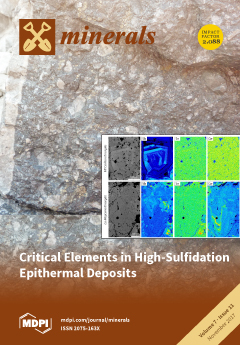Fluorine, a hazard that is associated with coal, has resulted in serious environmental issues during the production and utilization of coal. In this paper, we provide a detailed review of fluorine in Chinese coal, including the distribution, concentration, modes of occurrence, genetic factors,
[...] Read more.
Fluorine, a hazard that is associated with coal, has resulted in serious environmental issues during the production and utilization of coal. In this paper, we provide a detailed review of fluorine in Chinese coal, including the distribution, concentration, modes of occurrence, genetic factors, and environmental effects. The average concentration of fluorine in Chinese coal is 130.0 mg/kg, which is slightly higher than coal worldwide (88.0 mg/kg). The enrichment of fluorine in Chinese coal varies across different coal deposit regions, and it is especially high in Inner Mongolia (Junger coalfield, Daqingshan coalfield) and southwest China (coal mining regions in Yunnan, Guizhou province). The fluorine distribution is uneven, with a relatively high content in southwest coal (including Yunnan, Guizhou, Chongqing, and Sichuan provinces), very high content in the coal of North China (Inner Mongolia) and South China (Guangxi), and is occasionally found in the northwest (Qinghai). Fluorine occurs in various forms in coal, such as independent minerals (fluorine exists as fluorapatite or fluorite in coal from Muli of Qinghai, Taoshuping of Yunnan, Guiding of Guizhou, and Daqingshan of Inner Mongolia), adsorption on minerals (fluorine in coal from Nantong, Songzao of Chongqing, Guxu of Sichuan, and Shengli, Daqingshan, and Junger from Inner Mongolia), substitution in minerals (Wuda coal, Inner Mongolia), and a water-soluble form (Haerwusu coal, Inner Mongolia). The enrichment of fluorine is mainly attributed to the weathering of source rock and hydrothermal fluids; in addition to that, volcanic ash, marine water influence, and groundwater affect the fluorine enrichment in some cases. Some environmental and human health problems are related to fluorine in coal, such as damage to the surrounding environment and husbandry (poisoning of livestock) during the coal combustion process, and many people have suffered from fluorosis due to the burning of coal (endemic fluorosis in southwest China).
Full article





